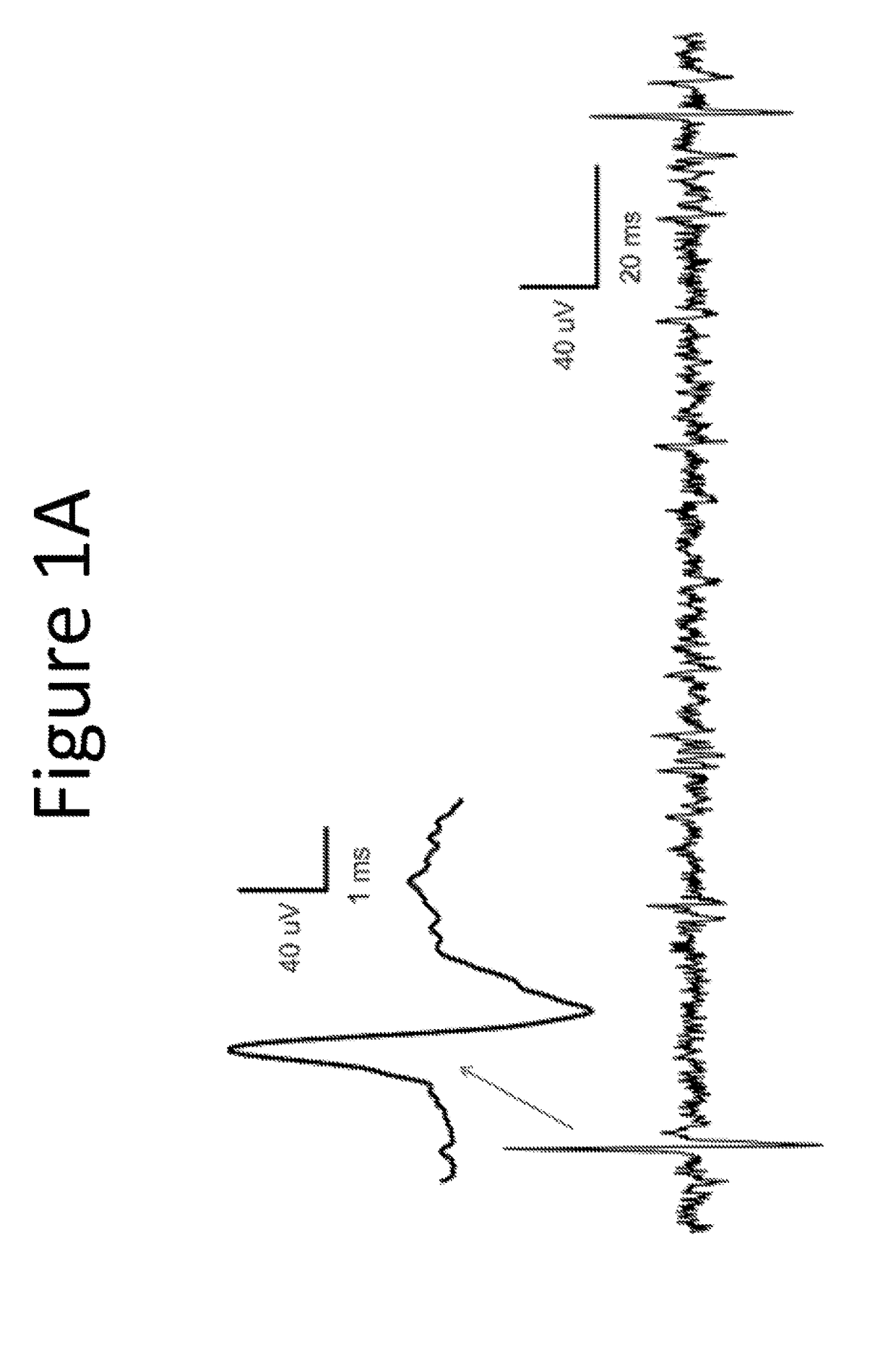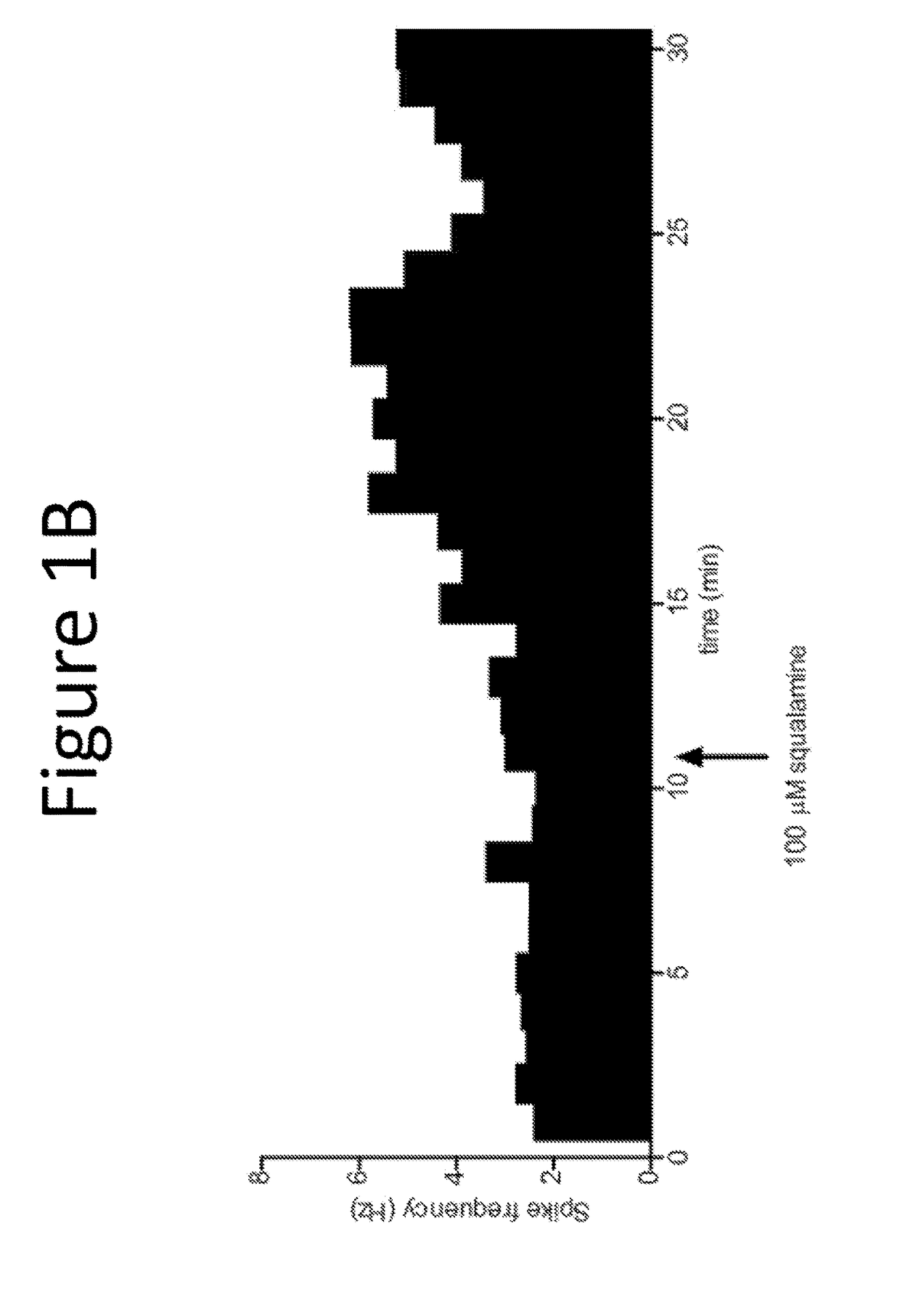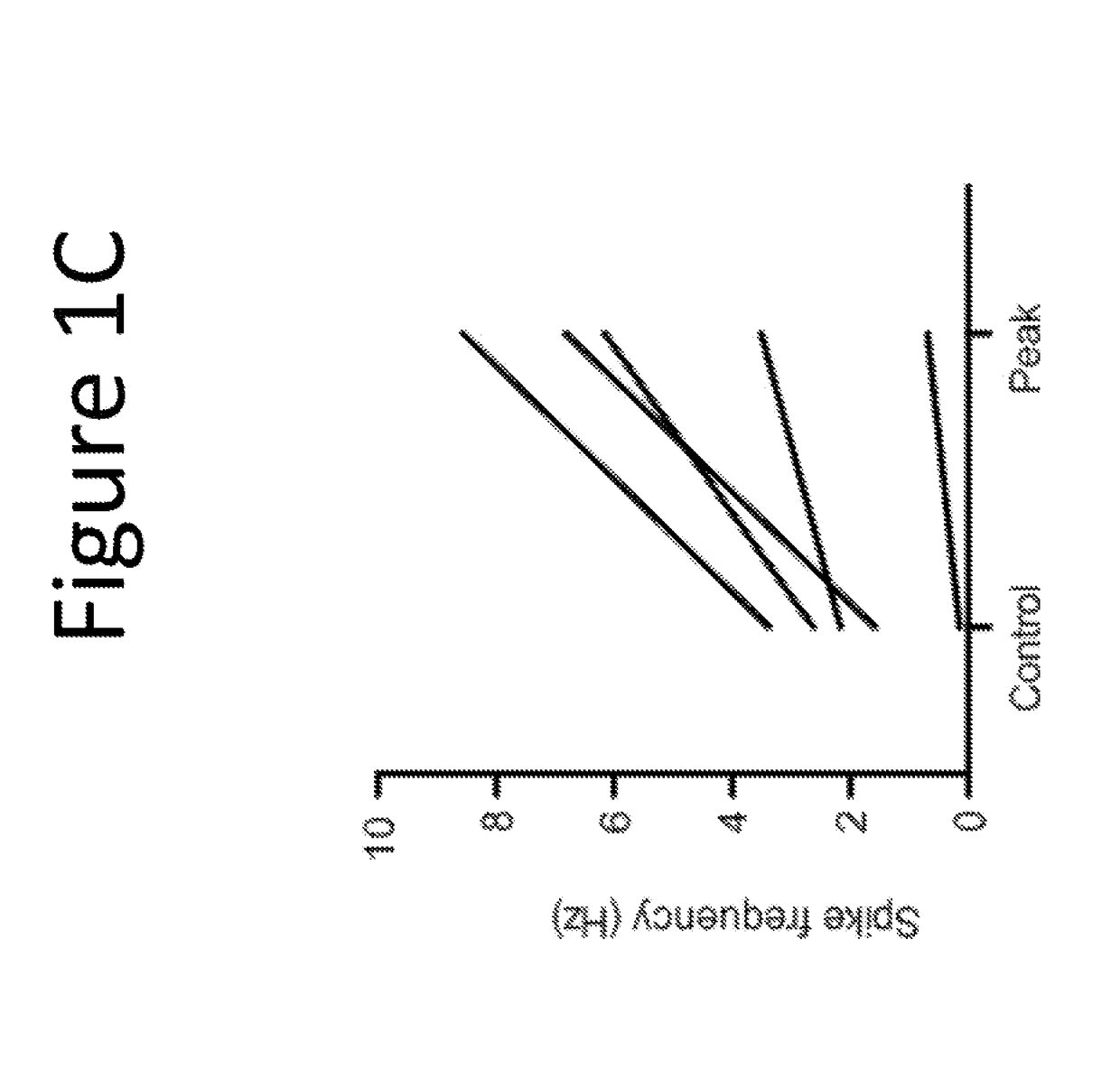Methods of treating and/or preventing neurodevelopmental disorders (autism) using aminosterols
a technology of neurodevelopmental disorders and aminosterols, applied in the field of stimulating the activity of the human and animal enteric nervous system, can solve the problems of affecting the functional integrity of the targeted microorganism, unable to make therapeutic claims, and unable to achieve the effects of preventing the oxidative or reductive metabolism of the steroid ring system, and improving biodistribution
- Summary
- Abstract
- Description
- Claims
- Application Information
AI Technical Summary
Benefits of technology
Problems solved by technology
Method used
Image
Examples
example 1
[0129]The purpose of this example was to evaluate the pharmacological effect of squalamine / Aminosterol 1436 administration on gastrointestinal behavior, referred to as “the Aminosterol Induced GI Response.”
[0130]Gelatin capsules were prepared for oral administration. Capsules were coated in shellac to prevent their release within the stomach. Furthermore, because squalamine and related aminosterols have antibiotic activity, enteric coating prevents the drug from altering the microbial populations of the stomach. The proximal small intestine, where the capsules should dissolve, is normally nearly sterile and hence not significantly perturbed microbiologically by the presence of the aminosterols. Squalamine dilactate powder, 99% pure, or 1436 hydrochloride, 99% pure, was added manually into either Size 0 (for the 200 mg dose) or Size 1 (for the 100 mg dose) gelatin capsules. No excipient was added. The capsules were coated twice in 5% shellac (80% acetone / 20% ethanol) and dried before...
example 2
[0133]The purpose of this example was to evaluate the pharmacological effect of squalamine / Aminosterol 1436 administration on gastrointestinal behavior.
[0134]200 mg of 1436 (HCl salt, excipients free) in a gelatin capsule was administered orally to a human male in the morning on an empty stomach, with water. Within 1 hour increased peristalsis was experienced, without nausea. At 2 hours, about 100 ml of clear watery diarrhea, recurring at 2.75 hours, 3 hours, 3.25 hours, and 4 hours, with progressively lesser volumes of liquid discharged. First bowel movement was passed at 3.5 days, of normal consistency. The subject experienced no abdominal discomfort, bloating, etc over this period. Usual bowel functions resumed by about 4.5 days after administration of Aminosterol 1436.
[0135]Based on this study, it can be estimated that 200 mg of Aminosterol 1436 (HCl salt) has reduced small intestinal motility by 3.5 fold. As noted following the administration of squalamine, the first passed sto...
example 3
[0136]The purpose of this example was to evaluate the pharmacological effect of squalamine / Aminosterol 1436 administration on gastrointestinal behavior.
[0137]200 mg of squalamine (lactate salt, excipient free) in a gelatin capsule was administered orally to a human male in the evening following a large meal. No gastrointestinal response related to the administration of squalamine could be perceived either overnight or by the following morning. A normal bowel movement was passed in the morning.
[0138]This response suggests that optimal oral dosing should be on an empty stomach. In addition, this observation suggests that squalamine initiates the Aminosterol-Induced GI Response in the proximal small intestine rather than in the distal. Squalamine, because of its physical properties, would be expected to bind tightly to foodstuff, and be unavailable to interact with the intestinal epithelium.
PUM
 Login to View More
Login to View More Abstract
Description
Claims
Application Information
 Login to View More
Login to View More - R&D
- Intellectual Property
- Life Sciences
- Materials
- Tech Scout
- Unparalleled Data Quality
- Higher Quality Content
- 60% Fewer Hallucinations
Browse by: Latest US Patents, China's latest patents, Technical Efficacy Thesaurus, Application Domain, Technology Topic, Popular Technical Reports.
© 2025 PatSnap. All rights reserved.Legal|Privacy policy|Modern Slavery Act Transparency Statement|Sitemap|About US| Contact US: help@patsnap.com



